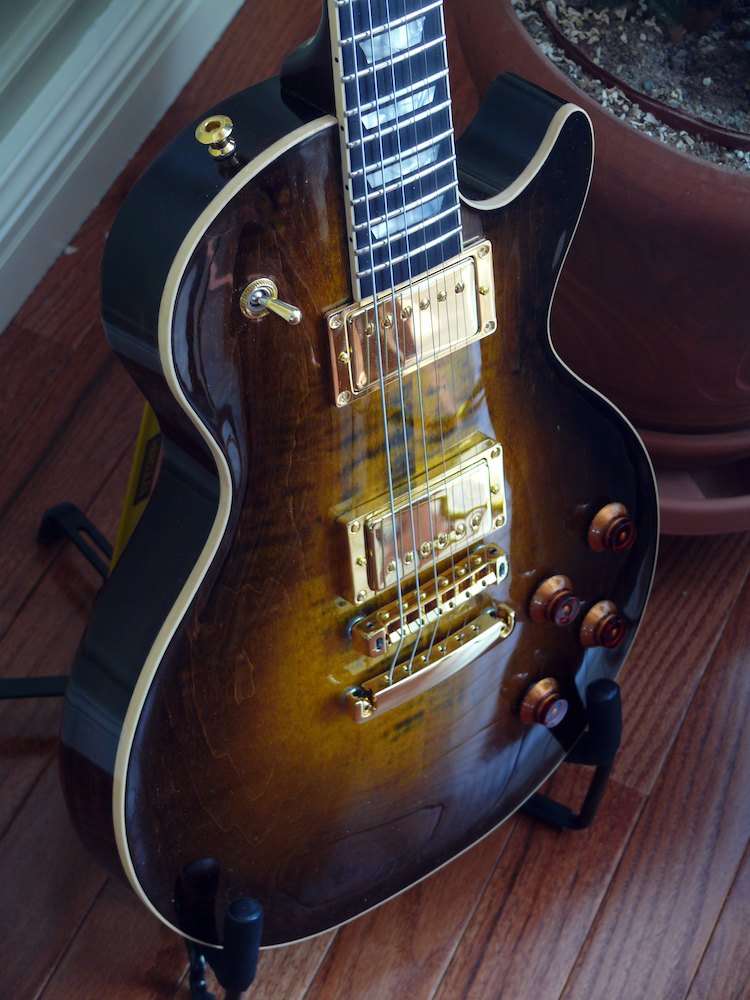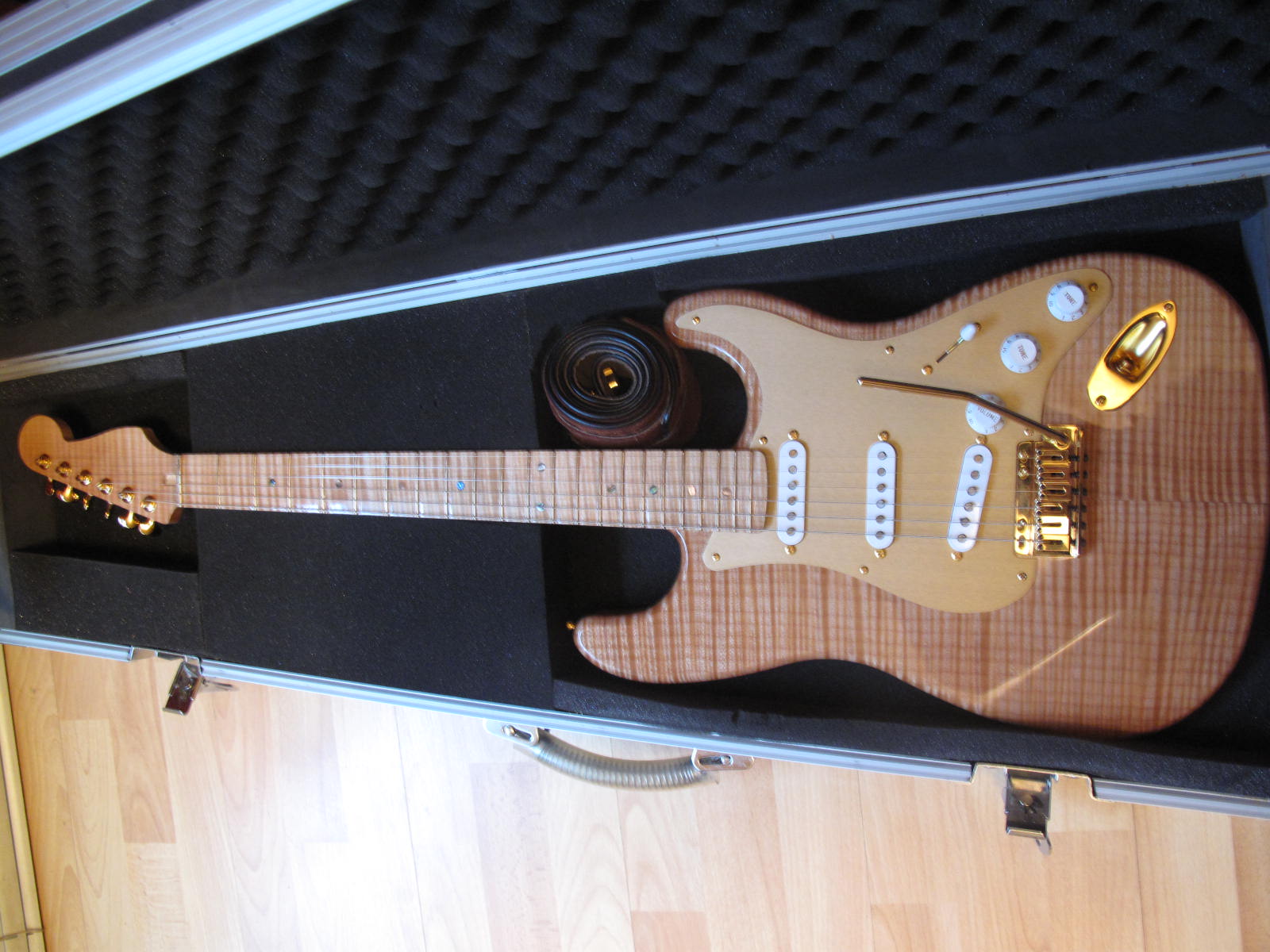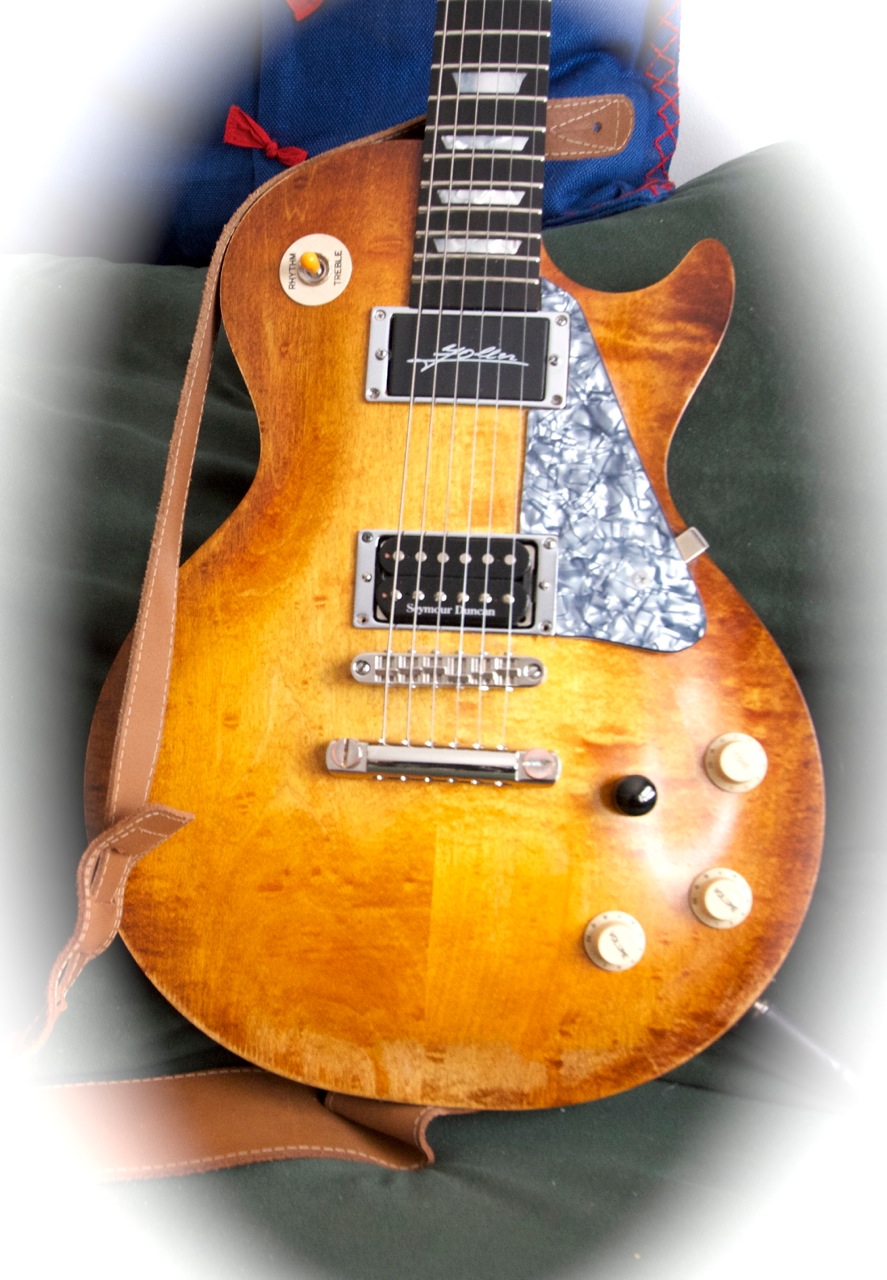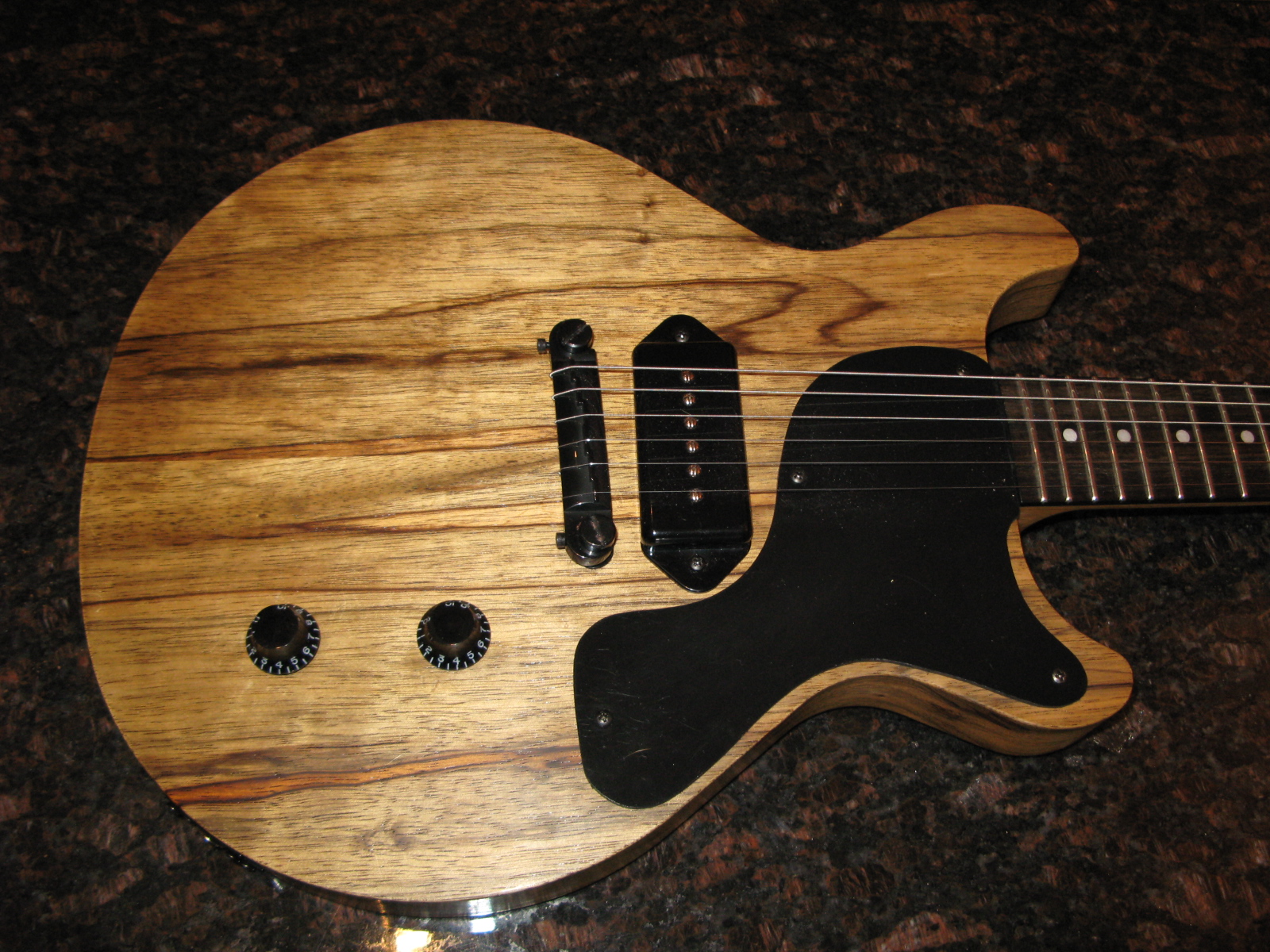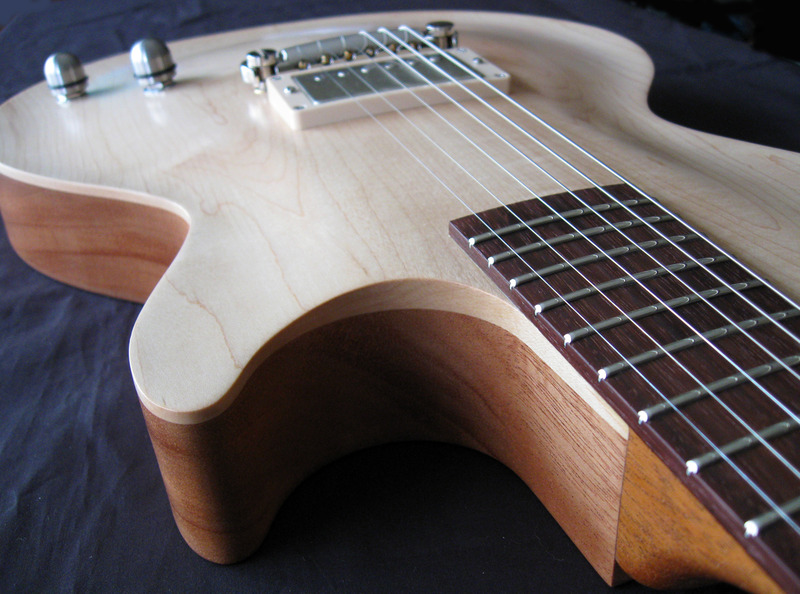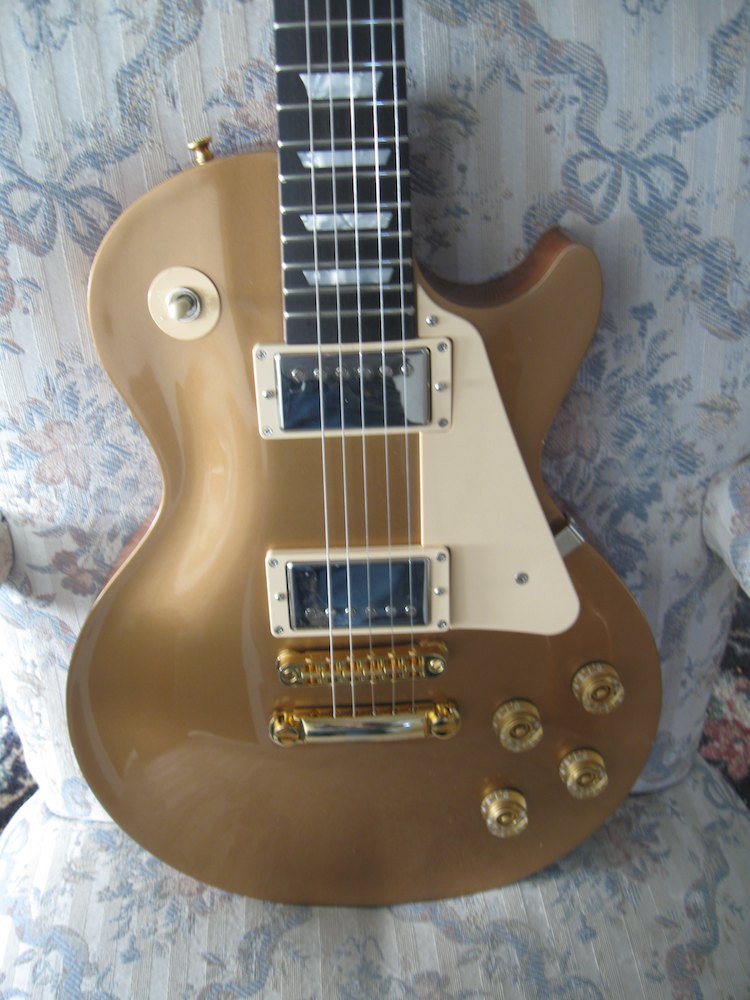
Here’s how it progressed…
Got back into town and a package from you was a’waitin’ a day after my 65th Birthday…..
Precision Guitars it an excellent name because you guys do VERY precise work…AWESOME.
GOT THE NECK GLUED ON TODAY AND WILL LET IT SET OVER NIGHT. TELL EVERYONE THERE THAT I AM VERY SATISFIED…..and am so happy to do business with people with not only excellent work ethic but awesome craftsmanship too. I will document what I do as an old man and stay in touch until it is finished.
Once again AWESOME, AWESOME, AWESOME !!!!!!!!!!!!!
Sprayed Re Ranch clear coat heavy enough over the area so that it got down to the gold coat. Let it dry over night. Wet sanded with 1000-1200 grit then masked that area and applied gold coat. Can’t see crack now. Maybe one more light mist of gold then 4-5 coats of clear. Will monitor the results and let you know.
Putting on the top nut took very little sanding mainly on each side. Really like how the Tone Pro Bridge and Tail Piece transfer the sound. Plugged it and all tone and volume knobs and top switch worked fine and sounded good even though I broke the top E String because I bent and kinked it as I had to remember how to string it correctly and of course didn’t buy extra strings.
Also did a slight adjustment on the truss rod (neck) and bridge and no buzzing strings and good action. Got a few dings to fix. Made the mistake of using a white lacquer primer/grain sealer and would only do that again if the guitar was white.
You can use these pics if you like or I can try for some getter ones and please tell everyone involved that they do really great work. It’s been a long learning curve but it sure feels good at the end. May do this again some day.







